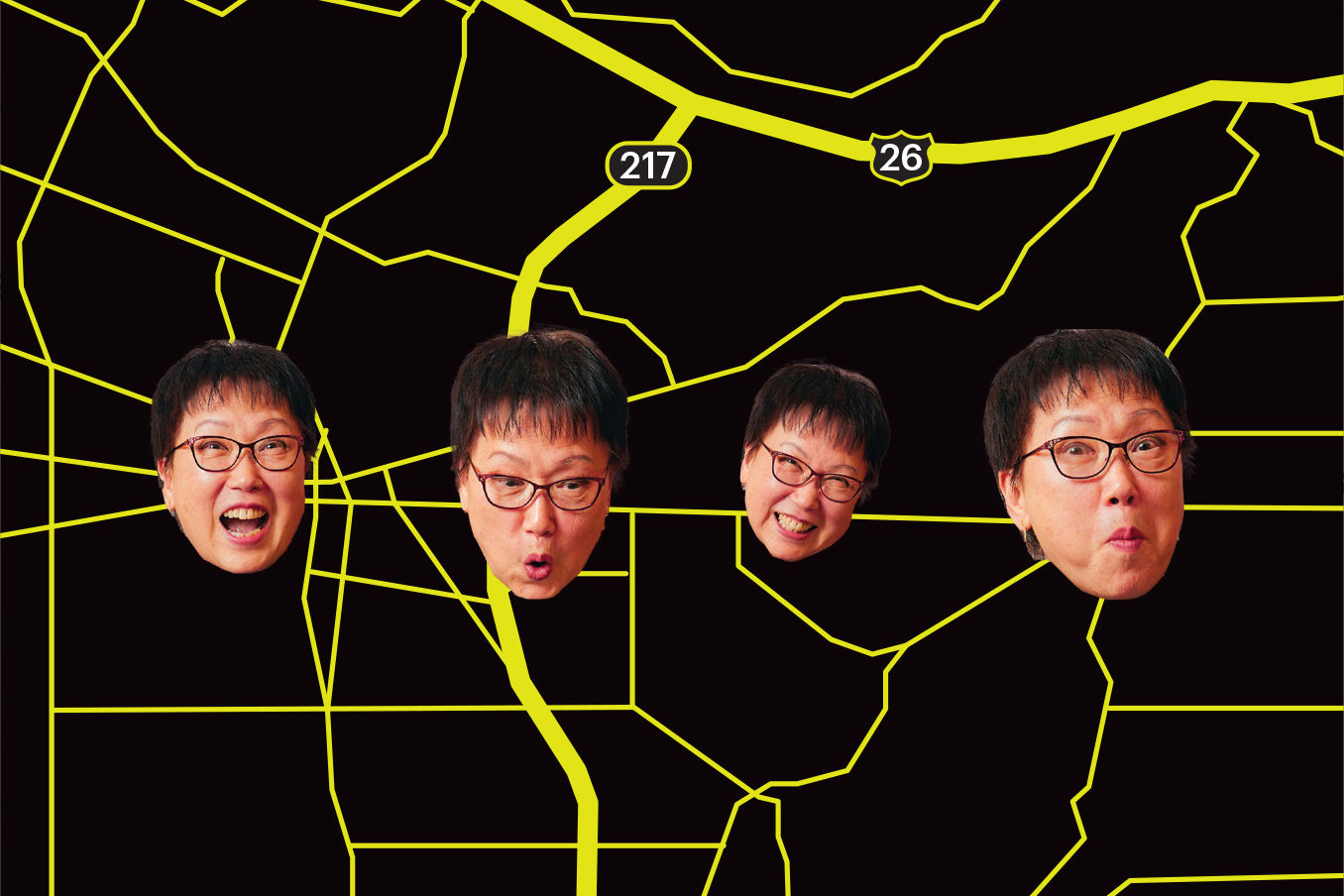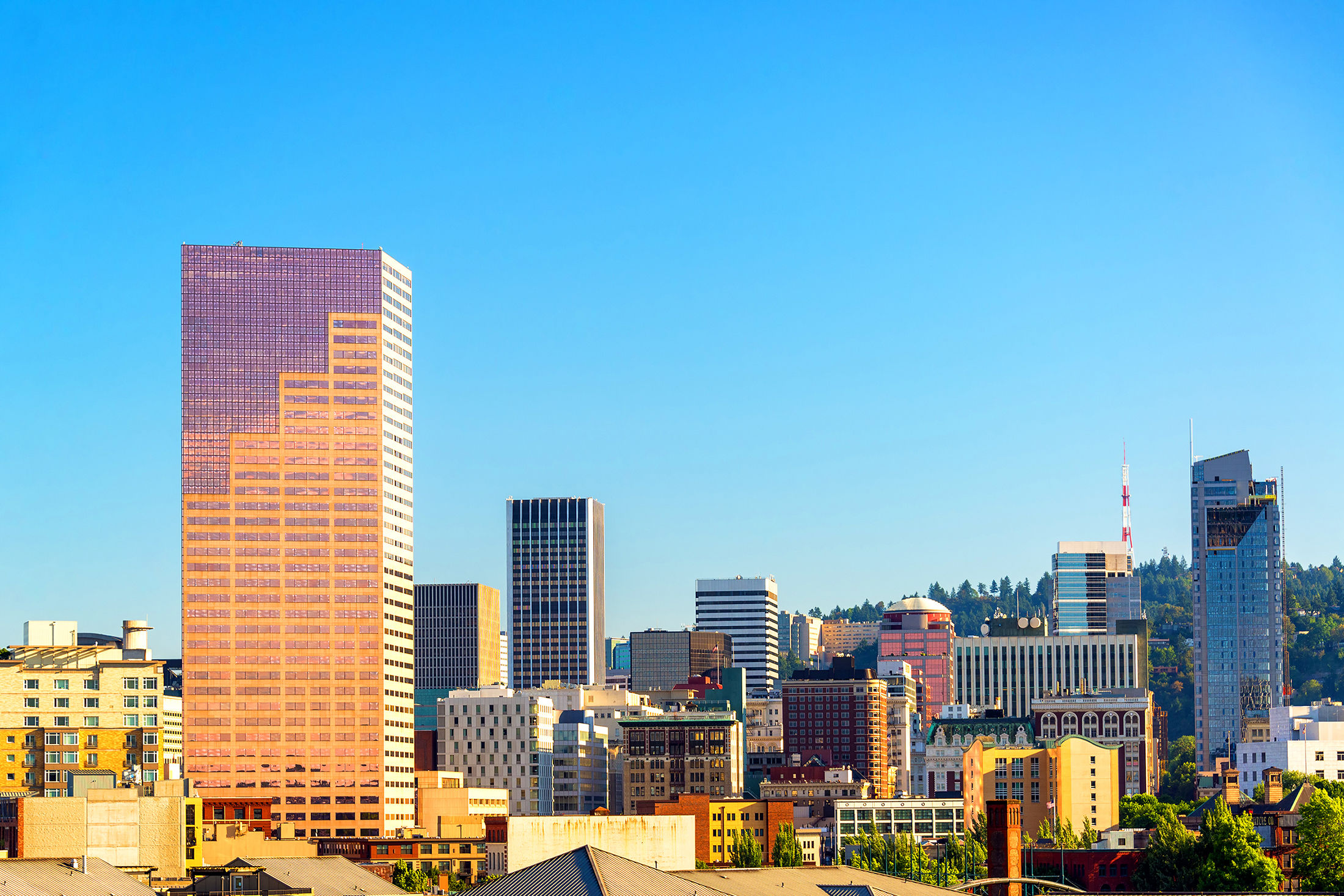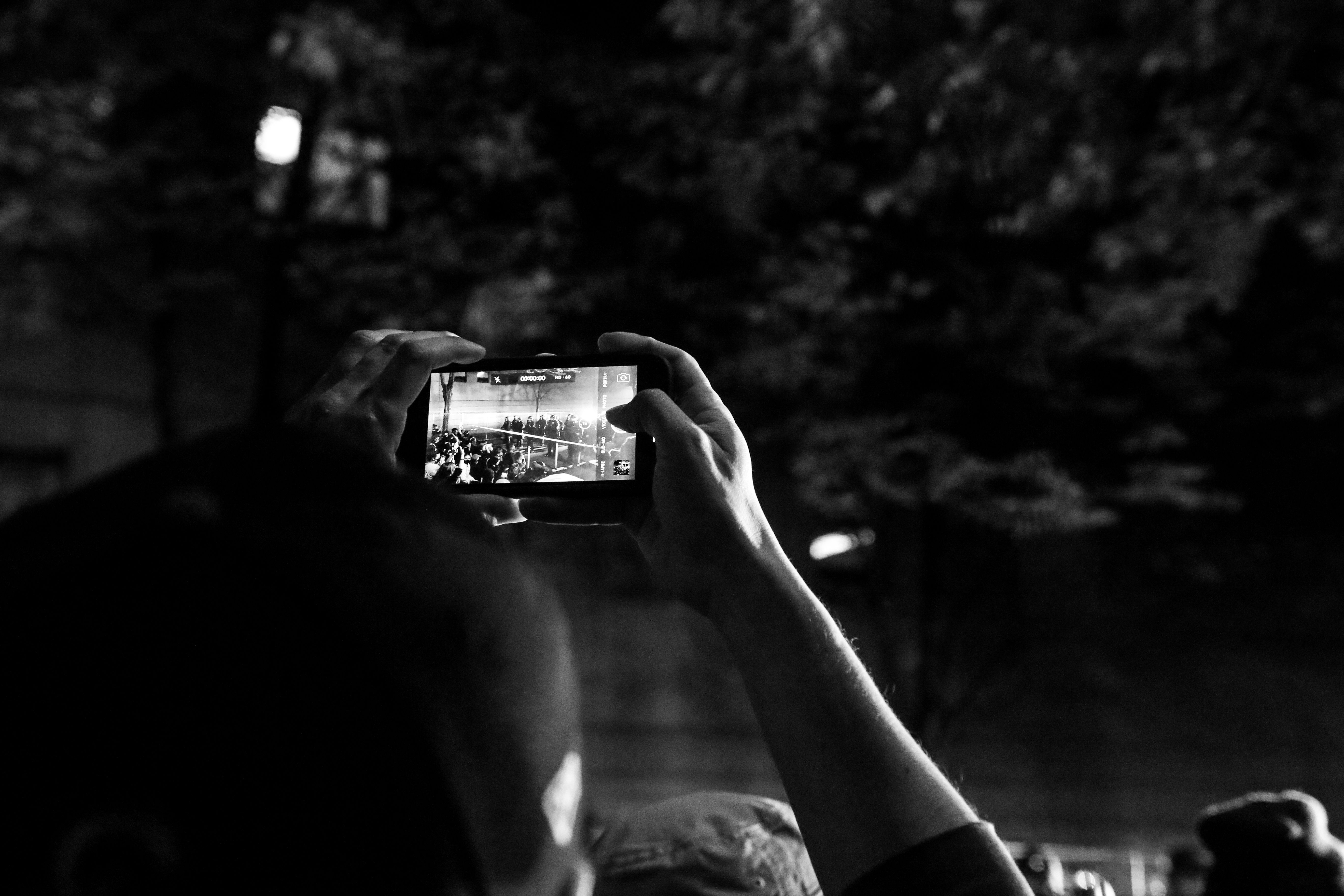
The Role of Social Media in Social Movements
It’s difficult to imagine a more apt symbol of white privilege than juxtaposing Colin Kaepernick, kneeling silently in protest against systemic racism and police brutality during the national anthem, with Derek Chauvin, a white Minneapolis police officer, kneeling on the neck of George Floyd, a black man, as he gasps for air. What that image doesn’t depict is that there were three other officers standing by, or that Chauvin continued to press his knee on the back of Floyd’s neck for more than eight minutes while onlookers pleaded with him to let up.
The video of Floyd’s killing on May 25 circulated through social media, and since then, formed an uprising, taking the shape of mass protests against police brutality and systemic racism, largely organized online.
In the days that have followed, we’ve seen handfuls of social media campaigns, including Blackout Tuesday, which, while poised to highlight Black voices, raised concerns that it actually drowned out important information and updates for protesters. Social networks have become hotbeds for liking, commenting on, and sharing information—what some might call “slacktivism”—on local Black Lives Matter protests, guides for folks looking to become allies in the fight against racial injustice, and political debates about race and equality in America. From documenting and sharing unfiltered images and videos of police violence to inciting legislative changes from local leaders, social media’s role in prompting and sustaining social movements cannot be understated, and it highlights the importance of maintaining a free and democratic virtual space.
There are a few ways to think about the impact of social media with regard to social movements. The aforementioned “slacktivism” is one, where users circulate information and resources through likes, shares, and retweets. Though it’s been disregarded as noncommittal, feel-good politics, there is some evidence that suggests this form of activism can actually help. A study by the University of Pennsylvania Annenberg School for Communication pointed to two significant groups in social protests: a core group and a periphery group. The core group are the users on the street, actively protesting and spreading their message, and the periphery are low-commitment participants, echoing and sharing that message through various social media.
For Kelsy Kretschmer, an associate professor of sociology at Oregon State University, she feels this form of activism has its benefits, coming down on the side of what’s known as the “Strength of Weak Ties,” which argues that information is most mobilizing when it’s coming from acquaintances or a stranger with a common communal background as opposed to a friend, family member, or loved one.
“If you see a lot of people online on your social media feed showing up for a protest, you are also more likely to show up for a protest because you feel like this is what your network is doing, and that can be really valuable,” Kretschmer says. “The best predictor of who shows up to protests are the people who were invited, the people who get asked or pressured into going. With social media, that increases the kinds of ways that people can get invited to a protest, even if it’s indirectly.”
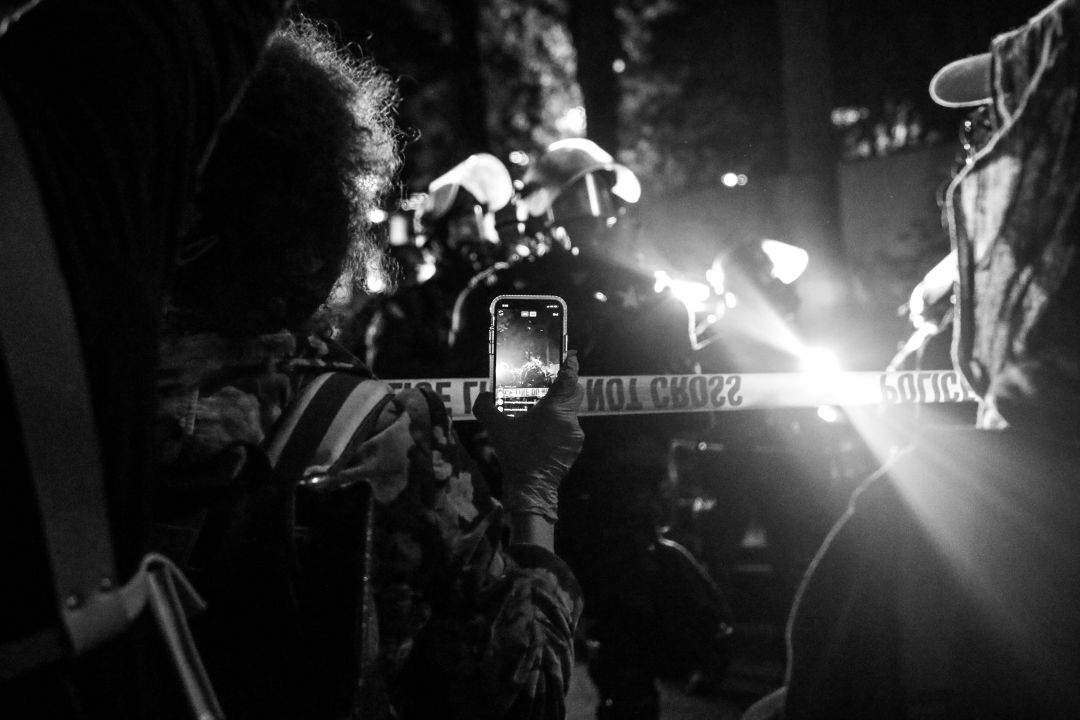
A protester records a police line at a demonstration on May 30.
Image: Gabriel Granillo
Kretschmer, whose work predominately focuses on social movement organizations, mobilizations, and conflict that arises within groups fighting for social change, says social media can be seen as a tool which works by capitalizing on real-life, or offline, networks that are already mobilizing. In recent protests, including the Arab Spring, the Umbrella Revolution in Honk Kong, #MeToo, Black Lives Matter, and others, social media has played a key role in amplifying their respective messages, even though each movement arose from very different circumstances and environments.
"The power of images communicates needs in a new way,” Kretschmer says, noting that social media’s impact right now can be viewed much like the impact of television during the Civil Rights Movement.
“You can see the threads of that happening still. George Floyd’s death matters to more people because there was footage of it happening. And it’s much different than reading an account in a newspaper,” she says. “So social media matters a lot for that, the same way national news broadcasts mattered a lot in the 1960s. That changes how many people are willing to participate.”
Floyd’s killing is only one name in a long history of police violence against Black people. Since the shooting death of Trayvon Martin in 2012 and the subsequent acquittal of George Zimmerman, BLM has organized thousands of national and international protests and demonstrations.
Christopher Stout, an associate professor in the School of Public Policy at OSU, has been studying the ebb and flow of BLM in the public consciousness and how it’s talked about by public officials, and he’s currently working on a book about how the movement has shaped discussions about race in American politics. Stout says a large part of BLM’s position in the public consciousness is due to how the movement takes shape on social media.
“Between Rodney King and Philando Castile or Mike Brown, police shootings were still occurring, in fact, there’s evidence that there haven’t been large changes in police brutality over time, it’s just that it’s finally getting some attention. Social media drives this change,” Stout says. “People can hear about something and not think about it, but seeing images on social media and having some of these images go viral, it’s really hard to ignore. It’s hard to say that these things aren’t happening or that these things aren’t a problem.”
Stout says social media is effective at bringing awareness to certain issues, “but it needs more sustained action. It’s just a starting point. Generally, once there’s awareness, then you have to go and actually push your politicians to do something about it.”
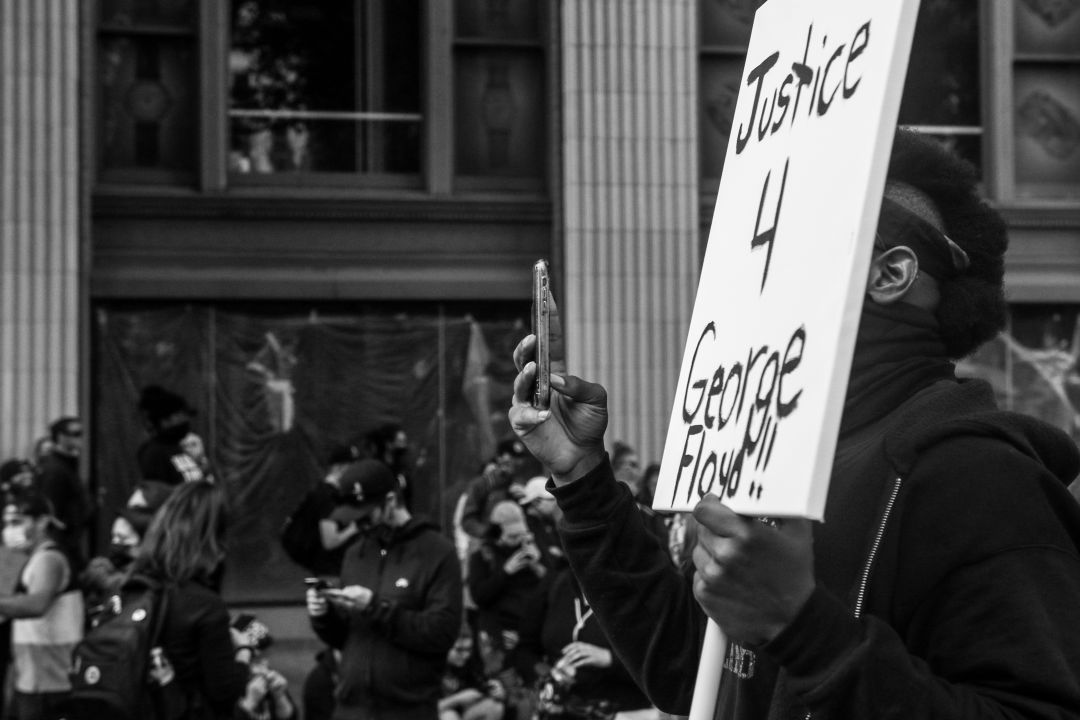
“People can hear about something and not think about it, but seeing images on social media and having some of these images go viral, it’s really hard to ignore. It’s hard to say that these things aren’t happening or that these things aren’t a problem," says Christopher Stout.
Image: Gabriel Granillo
As images and videos of peaceful protests turned awry due to police violence continue to emerge, discussions of significant changes to policy—particularly defunding or abolishing police (including the Portland Police Bureau)—have gained mainstream traction. Portland City Commissioner Jo Ann Hardesty is already proposing to defund specialty police units and transfer more than $4 million "to fund Portland Street Response, a new unarmed, non-police first response option," she wrote on Twitter on June 8.
On Tuesday, June 9, Ted Wheeler announced that the city would dissolve the Gun Violence Reduction Team, PPB transit police, and School Resource Officers, as well as divert $7 million from police and $5 million from other city funds to invest in communities of color.
Our ability to do all of this—raise our voices, organize and activate, share information, demand social and legislative change—is crucial to creating and sustaining a movement, provided we have the physical and virtual space to do that.
How does architecture and community-driven media intersect? Karim Hassanein may help us find the link. He’s an Egyptian-American senior marketing coordinator with Bora Architects and President on the Board of Directors at Open Signal, a media arts center in Portland. Spending most of his life outside of the US, Hassanein was studying landscape architecture at University of Oregon during the emergence of the Arab Spring in 2010.
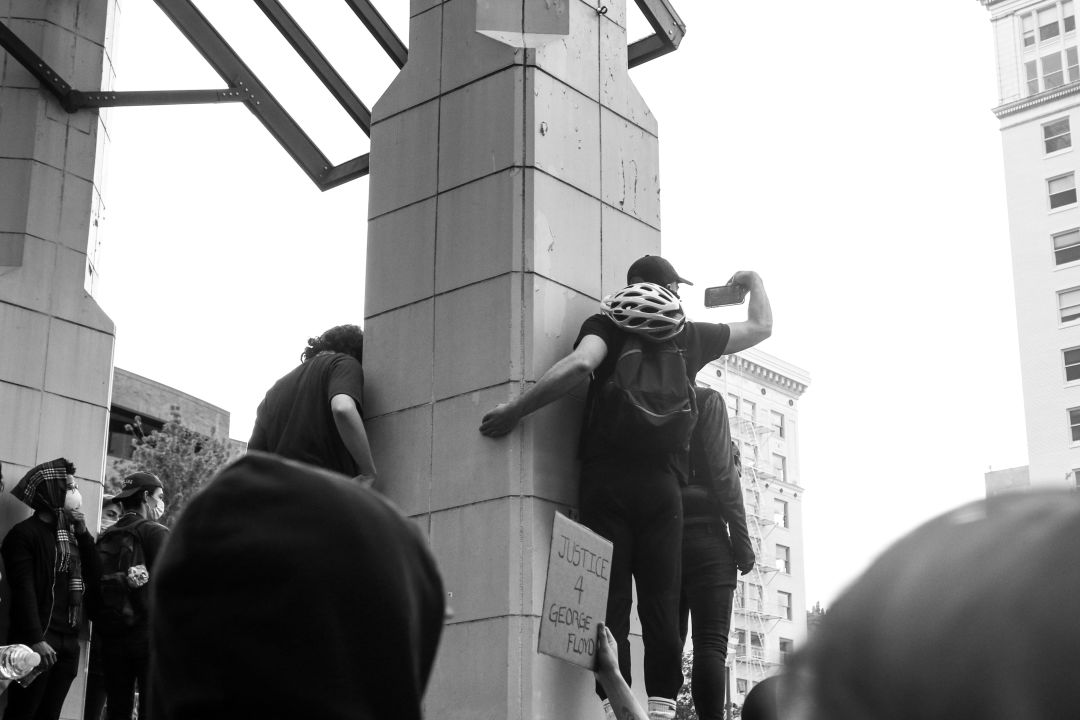
A protester records a demonstration at Pioneer Courthouse Square on May 31.
Image: Gabriel Granillo
“Watching from afar, here I was studying how built environment is essential to civic well-being and social health and environmental well-being. I didn’t want to focus on parks or beautiful back yards for wealthy people. I wanted to know special design applications to meet the demands of revolution in Egypt and to make a more democratic participatory society,” he says.
Hassanein was studying how our built environment, particularly cities, can be constructed in order to dictate the actions of people, “the way that we gather or don’t gather, the way that we engage with each other and our government or are held at arm’s length, the priorities that we place on who gets to develop land and what gets to be built there.”
What was emerging in 2011, he says, was virtual space, and in that space, with digital technology and social media, movements and organized action began to take shape. When Egypt began regulating the internet, it got Hassanein thinking about how digital environments, just as our physical environments, can be subject to oversight and control.
When the Federal Communications Commission repealed net neutrality regulations in 2017, it freed internet service providers to block or hinder access as they see fit unless argued against by Congress or the courts. For years, net neutrality advocates have argued that open access to the internet is crucial for innovation and freedom of expression. Hassanein says the BLM movement shows the importance of social media and public, affordable internet access—that without this digital space, our ability to organize and mobilize is severely limited, and he points to projects like Municipal Broadband PDX as potential solutions to a growing fear of regulation.
“The ability to maintain a free, fair, accessible, neutral, virtual space, the ability to have high speed, affordable access for every resident of this country is contingent upon us demanding that our government regulate internet as a utility instead of treating it as this separate issue," he says. "Our ability to use these [digital] spaces for activating and organizing to change our physical environment is largely contingent upon those infrastructures being publicly owned.”

